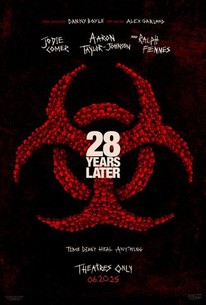28 Years Later: A New Chapter in the Rage Virus Saga
The long-awaited sequel to 28 Years Later returns to the chilling atmosphere of its predecessor, 28 Days Later. Directed by the acclaimed Danny Boyle and written by the talented Alex Garland, this film promises to delve deeper into the horrors of the rabies virus that has plagued humanity for decades. As the world struggles with the consequences of the catastrophic epidemic, the story takes place in a post-apocalyptic landscape where survival becomes a daily struggle.
The premise of 28 Years Later
Almost thirty years have passed since the rabies virus escaped from a bioweapons laboratory, causing chaos and turning society into a battlefield between the infected and the uninfected. The story takes place in a tightly fortified quarantine zone, where some survivors have managed to adapt and live amidst the chaos. A small group of survivors live on a remote island, safe from the horrors that lurk on the mainland. But their isolation is shattered when one member of the group embarks on a dangerous mission deep into the heart of the infected territory.
Journey into Darkness
The survivors’ daring journey to the continent reveals a world that has changed dramatically. The infected have evolved, and so have the rest of humanity. As they travel through abandoned cities and meet other survivors, they uncover shocking secrets about the rabies virus and how long humanity will survive. The film’s narrative explores themes of resilience, morality, and the human condition in extreme circumstances.
Key Themes and Elements
One of the standout aspects of 28 Years Later is its exploration of the human psyche in the face of overwhelming odds. The film poses thought-provoking questions about survival and what it means to be truly human. Viewers are taken on an emotional rollercoaster ride as the characters grapple with their choices and the consequences that follow.
- Survival in Isolation: An island community’s fight for its humanity.
- Evolving Threats: The changing nature of the infected and their impact on the survivors.
- Moral Dilemmas: The choices individuals face when faced with a threat to their survival.
Visual and Auditory Experience
Visually, 28 Years Later promises to be an incredible experience. With Boyle’s signature style and Garland’s compelling storytelling, audiences can expect breathtaking cinematography that captures the viciousness of a world ravaged by the rabies virus. The meticulous attention to detail in the set and location lends authenticity to the film, immersing the audience in a stunningly beautiful yet terrifying landscape.
The auditory experience is equally compelling, and the result is oppressive, heightening the tension and evoking deeply emotional responses. Sound design plays a key role in creating suspense, ensuring that every moment is filled with anxiety and suspense.
28 Years Later Impact
As a sequel to a beloved classic, 28 Years Later carries a heavy burden of expectations. Fans of the original film will certainly want to see how the story unfolds and what new horrors lie ahead. The film aims not only to satisfy long-time fans, but also to attract a new generation of viewers who are drawn to the horror genre.
With its combination of action, suspense and psychological depth, 28 Years Later is poised to become a landmark horror film in the film canon. The film explores the human condition in extreme circumstances, making it more than just a typical horror film.




 35/35
35/35